One of the hardest parts of building a social enterprise is how to actually start. And by starting, I don’t mean how to write a business plan, make a shiny pitch deck or come up with a logo. I mean how to put your product or service in front of a customer for the first time – without spending two years and a fortune along the way.
Thanks to Lean Startup principles and agile development processes, it is rare to see technology companies spending months and years building the complete product before putting it out on the market. In the social impact space, where we often assume that our good intentions will obviously translate into sought-after products or services, early prototyping is at least as important. Especially, because most social startups can only dream of the financial resources a tech company may have, so each penny must be spent wisely – and must ideally come back from a paying customer.
At Agruppa, we were very good at shiny pitch decks, but still struggled to get our service out of the door at the beginning. Agruppa’s mission was improving the fresh produce supply chain between the farm and the city in order to help small retailers offer fresher products at better prices to their customers. Our model was aggregating the demand of Mom-and-Pop shops and establishing an alternative supply chain straight into this important but highly fragmented market segment. With a business model that involved buying farmer produce, transporting it to the city and delivering it to Mom-and-Pop shops, we calculated the initial investment to be much higher than what was sitting in our bank accounts at the time. However, we also knew that in order to successfully fundraise, we would need to be able to present some kind of traction – revenue from real customers. So while the hundreds of hours spent talking to prospective customers, conducting countless stakeholder interviews, crunching market data in our office, as well as collecting our own out there on the streets, were all extremely valuable, they were just not enough to convince funders to bet on our idea. And most importantly, they were not enough for us to be sure we were building the right kind of service or whether Mom-and-Pop shops would even care about us.
The good news is: prototyping can be much simpler than it seems, if the founders can hold their ego at bay and live with the fact that the first version of their product and service will not be as pretty as they’ve always imagined. Most likely, it will be faulty, ugly, and crooked – but it will be gold for the future of your enterprise.
At Agruppa, we knew we could not build an app, set up a warehouse and buy truckloads of potatoes in order to get wholesale prices for our first day of sales. Instead, we focused on the most critical assumptions that our business model was built on – those assumptions that when proven wrong, would kill the whole idea.
For us, those were:
-
Mom-and-Pop shops are willing to order the produce for their shops the night before and without seeing it (instead of buying it at the market the next day)
-
Our value proposition is attractive enough for Mom-and-Pop shops to contact us (instead of us having to chase them)
-
Mom-and-Pop shops will receive the ordered produce the next day and pay the agreed price upon delivery
… as long as the produce was of decent quality and the price was competitive. (The Agruppa model was, of course, built on many more assumptions, but these were the key customer-facing ones.)
While focusing on these three assumptions for our first pilot of the service, we also acknowledged that in the Agruppa model, the customer-facing ordering app was just a means to an end. The business at its core did not depend on the communication channel we chose with our customers, which also meant it did not matter at the start.
So what did we do? We got a new mobile number with a prepaid sim card, put it into an old phone and printed some terribly designed flyers with the phone number and our main promise to the customer: order cheaper produce for your shop with us and we will deliver it to you tomorrow morning. At this point, we had no warehouse, no delivery truck, no brand, no app, and not even a single potato to sell.
We chose a pilot neighbourhood and distributed the flyers in all Mom-and-Pop shops, giving our little sales pitch and answering any questions during this first visit. At night, we decided on a price for the next day and waited for the calls to come. They, however, did not. So we started calling our list of Mom-and-Pop shops to inform them of our – made up – potato price for the following day, and took our first couple of orders.

In the morning, we took public transport to the wholesale market of the city and purchased 20 sacks of potatoes. We then contracted a small truck to deliver them to the Mom-and-Pop shops, where we would charge the agreed price, go home, and again wait for calls in the evening. After a couple of days, the calls started coming in. Over the next couple of weeks, we added tomato and onion to our product list, rented a garage for storage, and informally contracted someone from the community with a truck to go to the market with us in the early morning hours and do the delivery route. He would also help us unload and store produce at the garage, since my co-founder and myself could not actually move around our main product: 50kg potato sacks. (In hindsight, it is not the best idea to start a delivery service in which you cannot actually (physically!) deliver yourself, as it implies paying other people from day one.)
As mentioned above, any prototype is most likely going to be faulty, ugly and crooked. And indeed, our pilot service at Agruppa was all of that, and more. But overlooking the rough surface, it shone bright – because it helped us getting our first paying customers, and rapidly learn from the real market through our mistakes and customer praises as well as complaints. It was painful in every way, but it worked in showing us the reality of the social enterprise we were intending to build while spending less than $10,000 USD in six months.
In the process, we learned some lessons that I believe can apply to any startup – whether social impact focused or not, whether for a digital or physical product:
-
Prototype as early as possible: if your target market segment is big enough so that losing a couple of customers due to bad experiences does not really hurt you – go for it. (And if it is not, you’d better rethink the whole idea.) Get real feedback from real customers as soon as you can, even if this means testing one assumption at a time with a completely made up product.
-
Focus on testing key assumptions or features, not on how it looks: at Agruppa, we sold our produce below purchase price to the Mom-and-Pop shops in order to mimic the attractive prices we were going to be able to offer once we would have a big enough network of shops. Of course it made us lose money, but recovering 90% of the purchase price was better than nothing, and offering higher prices in order to cover our costs would not have tested the envisioned service offering. Even if your prototype is far removed from that pretty product you may have envisioned for months, get it out there. This of course requires having a reasonable idea of which product features are a “must” and which ones are “nice to have” for your specific segment. We knew that a competitive price was a must for Mom-and-Pop shops, while whether the produce came directly from the farm or from the central market was not essential to them.
-
Make sure customers pay: everyone loves presents, and maybe your start-up funding allows you to give out a prototype for free. But the path from “I like this product” to “I am willing to pay for it” can be very, very long. If your vision is to be financially self-sustaining, as it was for us at Agruppa, predictable and regular income (which in our case translated into the willingness to pay) is one of your key assumptions and needs to be put to test.
-
Measure, adapt and go back to step 1: the end goal of prototyping is learning, not generating revenue or growing your customer base. For us, this meant carefully monitoring order behaviour, running pricing experiments, testing out delivery times, etc. – and dealing with a lot of complaints. But this feedback is what ultimately leads to carving out the end product. Depending on the key assumptions you want to test, define how you will know whether they are true or not, and how to measure that. Then measure, adapt, repeat.
We recognise that not all assumptions can be tested equally easily. At Agruppa, for example, we believed that once we started delivering the full product portfolio to Mom-and-Pop shops, they would stop travelling to the central market altogether and become truly loyal to our service. However, we did neither have the working capital nor the logistical capacity to try this out.
Also, if you are building a purely digital product, it may need to be prototyped as such, for example with a paper prototype or a clickable mockup. But it is worth thinking hard about what your service offering is at core, and if it cannot be tested in a different form and shape that is faster and less costly before being fully developed.
Lastly, at Agruppa we – sadly – hugely benefited from Colombia’s informal economy, and we recognise prototyping certain types of services may have been much easier in Colombia than in a different regulatory reality. However, there may be ways to offer your product to customers for free, or in exchange for donations, which allow you early on to skip the need for licenses or permits your business may need to operate properly. What is key is that a couple of real customers have tried and approved of your product before you even go and stand in that queue for the permit.
At Agruppa, we learned that it is much easier and much harder than you think to get your product or service in front of a customer for the first time – but it is indispensable. And for my part, I like to meet the reality rather sooner than later.
About the Author
Verena Liedgens is a self-proclaimed social entrepreneur without an enterprise. Co-Founder of Agruppa. Passionate about food, business model innovation and using markets for a more inclusive future.
Check out more articles from Verena Liedgens here.

